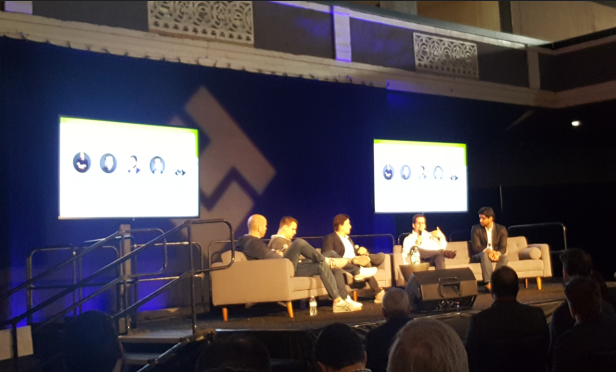 Commercial real estate has a lot to gain from the rise I AI and machine learning tools. The industry handles an abundance of data—and at CRETech last week, tech experts called the “abundance of data” among the biggest challenges for commercial real estate. On the AI and the Coming Revolution in Commercial Real Estate panel at the conference, those same experts talked about the benefits of AI and machine learning technology. The panel included Guy Zipori, co-founder and CEO at Skyline AI; Abhinav Somani, CEO at LEVERTON Corp.; L.D. Salmanson, CEO at Cherre; and Richard Sarkis, co-founder and CEO at Reonomy.
Commercial real estate has a lot to gain from the rise I AI and machine learning tools. The industry handles an abundance of data—and at CRETech last week, tech experts called the “abundance of data” among the biggest challenges for commercial real estate. On the AI and the Coming Revolution in Commercial Real Estate panel at the conference, those same experts talked about the benefits of AI and machine learning technology. The panel included Guy Zipori, co-founder and CEO at Skyline AI; Abhinav Somani, CEO at LEVERTON Corp.; L.D. Salmanson, CEO at Cherre; and Richard Sarkis, co-founder and CEO at Reonomy.
Salmanson, who called data one of the challenges to the industry, said AI and machine learning—which are used by all of the panelists—will change the way the people use and analyze data. “How do we connect data together to make it meaningful,” he said. “The biggest challenge doing it manually. We are trying to do it programmatically. That is where we spend most of out time.”
AI is already solving those problems. LEVERTON Corp., for example, is using AI technology to ease the contract exchange and transparency. “What AI is solving is business acceleration and making things more efficient,” Somani said. “We are solving the time people use putting data together, and then AI helps people make sense of the data. We are using deep learning algorythms. Most of this revolves around pattern recognition—replicate human brain functions and achieve same value.”
For some companies, AI is a necessary tool to reach scale. Reonomy, an SAS application akin to Zillow for commercial real estate, adopted AI technology late in its business. “Originally, we had zero machine learning. We were able to do that successfully in New York. We couldn't scale the platform without machine learning. Those algorithms could stitch data together. For us, it is a means to an end,” said Sarkis.
There is a lot of confusion around AI and machine learning tools, and how they work or can work to increase efficiency. For all of the panelists, most of the work—about 80%—is focused on structuring data and the program and only 20% was actual machine learning. At its core, 70% to 80% is blocking and tackling around the structuring of the data [needed] to do cool stuff of the predictive analytics, which is about 20%. That isn't seeing right in front of you, but seeing around corners and seeing trends before the happen.”
Zipori concurred that most of the process was structuring data, and he added the results of AI are really meant to support investment decisions, rather than make them. Our challenge also starts with structuring the data, and there are parts of that that are not machine learning and AI,” he said. “We put a lot of effort tin predictive models. We want to know what will happen to an asset so we work on predictive models. There are problems that can be solves autonomously and others that need human involvement. We are not trying to take in autonomous decisions. We are focused on using predictive analytics to support decisions.”
This concept was a clear takeaway from the conference—the idea that AI should be used to explain human decisions. To teach a machine to make the right decisions, you must feed it data. “You need training data sets,” said Sarkis. “There is a roar for training data, and we have an advantage because we have data, and we use that to train and retain your algorithms. AI isn't trying to come up with something different, but training it to make the same decisions that you would make more quickly.”
© Touchpoint Markets, All Rights Reserved. Request academic re-use from www.copyright.com. All other uses, submit a request to [email protected]. For more inforrmation visit Asset & Logo Licensing.






